Abandoned History: General Motors' Passport and Asna, Total Brand Confusion (Part II)

We started our coverage of GM’s Eighties and Nineties branding adventures last week, with the short-lived experiment that was Passport. The dealership network was an amalgamation of GM-owned or influenced brands from Japan, Sweden, and in the case of the Passport Optima, South Korea. Passport lasted from 1987 through 1991 before GM changed directions. In addition to axing an unsuccessful sales channel, Geo and Saturn cars had arrived during Passport’s tenure and made things more complicated. Let’s learn some more about GM’s Canadian dealership networks.
Aside from the aforementioned Passport dealers that became Saturn-Isuzu-Saab outlets during 1991, there were two main GM distribution networks that spanned the far reaches of the nation from Downtown Canada to other places that probably included Regina and Vancouver. Grouped together were Chevrolet, Oldsmobile, and Cadillac as one distribution, and Pontiac, Buick, and GMC as the other. These two main networks were supported by the new Saturn-Isuzu-Saab setup that sought to capture more “import” buyer business (a concept with which GM was obsessed from 1984 through roughly 2003).
While Pontiac dealers were gifted the orphan formerly known as the Passport LeMans in 1992, Chevrolet dealers sold the various Suzuki products (like the Spectrum) GM badged with a bowtie in the middle of the Eighties. That trend continued in 1989 when by default the cars sold as Geos in the United States were marketed as Chevrolet in Canada.
Geo was not introduced to Canada until 1992, but the Geo-cum-Chevrolets were pretty popular when they arrived at the end of the decade. That didn’t make the folks at Pontiac-Buick-GMC dealers too happy since the only Geo available to them was the Tracker, badged as a GMC. Dealers petitioned GM to cut them in on the action, and that lead to the creation of a new brand: Asüna.
GM filed for its declaration of use in Canada on May 20th, 1990, even before the official termination of its Passport. The brand itself was officially founded on April 12th, 1992. Asüna provided much promise to the sales staff at Pontiac-Buick-GMC dealers, who desperately wanted some of the small product Geo offered.
Let us remind ourselves that the GM lineup consisted of four total vehicles in 1993: Metro, Prizm (second-gen), Storm, and Tracker. The Prizm was the only vehicle in its second generation guise, as the others were still in original Eighties format. It was from this basis that Asüna constructed its small lineup.
The most promising offering in the new brand’s lineup was the Asüna version of the Tracker, the Sunrunner. The Tracker was available at Chevrolet dealerships across Canada in 1989 in its standard guises (hardtop, convertible, and five-door). Tracker remained under its Chevrolet banner until 1992 when it was renamed Geo Tracker but curiously kept its gold bowtie logos. In fact, the Geo Tracker in Canada always wore a Chevrolet badge, through the end of its first-generation production in 1998.
GMC had their own version of the Tracker, badged as such from 1989. There were limited differences other than badging, but CL in Chevrolet speak became the SLE trim at GMC dealers. 1991 was the final year for the GMC Tracker, as, unlike the Chevrolet version that was renamed Geo, its transformation into the Asüna Sunrunner included new badging.
The Sunrunner was the first Asüna available when it arrived for 1992. Underneath it was the Suzuki Vitara, often called the Escudo in other markets. Geo’s most recognizable model, the Tracker’s first generation ran from 1989 to 1998, at which point it switched to the second generation that was sold from 1999 through 2004. The Tracker outlived GM’s interest in special Geo branding and existed for the second half of its life as a Chevrolet.
Serving as the only Asüna vehicle that nobody actually wanted was GM Canada’s favorite orphan, the LeMans. After a single year as a Pontiac in 1992, 1993 saw the LeMans facelifted and turned into the Asüna SE and GT. The only difference in the new version was a new front clip and very slightly revised taillamps. It arrived a year after the Sunrunner was on dealer lots. The facelifted LeMans was sold in the US for a single model year, and its tenure at Asüna proved very short as well: 1993 was its only year. We discussed the history of the LeMans plenty in our last entry.
The third and final Asüna was the sportiest of the group, the Sunfire. Typically associated today with Pontiac, the Sunfire name was first applied to the Geo Storm to make it an Asüna. The Storm had been restricted from Canada, as the second-generation model was not imported as an Isuzu or a Geo in 1992. Asüna customers received the Sunfire only as a hatchback – the seldom-selected wagon version was off-limits.
The Sunfire and Storm were rebadges on the second generation of the Isuzu Impulse, or Piazza if you prefer. Though it was much more modern than its predecessor, the second generation lost a lot of its heart and soul. It was not designed by Giugiaro, it wasn’t rear-drive, and it didn’t last very long. Due to slow sales globally, Isuzu canceled the Impulse after just four model years. The Storm was not replaced in the Geo lineup, and it was the one and only time the brand had a sports compact on offer.
Though Geo sales continued in the US and Canada, Asüna was not so fortunate. The familiarity of the Canadian consumer with imported cars at Chevrolet dealers was too great for the good folks at the Pontiac dealer across the street to overcome. It didn’t help that the affordable and higher volume Metro and Prizm were not allowed to copy over to Asüna.
The only car to make it out of Asüna alive was the Sunrunner, which drove over to Pontiac showrooms in 1994. That year, GM allowed Pontiac dealers access to another Geo, the Metro. For Pontiac usage, Metro was rebranded and sold as the cheesy Firefly. The Pontiac Sunfire returned in 1995 as a redesigned J-body.
Unlike the Passport trademark that GM retained and renewed for some time, Asüna received much less attention. After its registration, it was never renewed. The Canadian government notified GM in February 2008 that the trademark was about to expire, but The General didn’t respond. Asüna was expunged from active status on September 18, 2008. Thus concludes the Passport and Asüna tale. Seven total years of brand experimentation that almost nobody remembers makes for perfect Abandoned History.
[Images: GM]

Interested in lots of cars and their various historical contexts. Started writing articles for TTAC in late 2016, when my first posts were QOTDs. From there I started a few new series like Rare Rides, Buy/Drive/Burn, Abandoned History, and most recently Rare Rides Icons. Operating from a home base in Cincinnati, Ohio, a relative auto journalist dead zone. Many of my articles are prompted by something I'll see on social media that sparks my interest and causes me to research. Finding articles and information from the early days of the internet and beyond that covers the little details lost to time: trim packages, color and wheel choices, interior fabrics. Beyond those, I'm fascinated by automotive industry experiments, both failures and successes. Lately I've taken an interest in AI, and generating "what if" type images for car models long dead. Reincarnating a modern Toyota Paseo, Lincoln Mark IX, or Isuzu Trooper through a text prompt is fun. Fun to post them on Twitter too, and watch people overreact. To that end, the social media I use most is Twitter, @CoreyLewis86. I also contribute pieces for Forbes Wheels and Forbes Home.
More by Corey Lewis
Latest Car Reviews
Read moreLatest Product Reviews
Read moreRecent Comments
- Wjtinfwb 157k is not insignificant, even for a Honda. A lot would depend on the maintenance records and the environment the car was operated in. Up to date maintenance and updated wear items like brakes, shocks, belts, etc. done recently? Where did those 157k miles accumulate? West Texas on open, smooth roads that are relatively easy on the chassis or Michigan, with bomb crater potholes, snow and salt that take their toll on the underpinnings. That Honda 4 will run forever with decent maintenance but the underneath bits deteriorate on a Honda just like they do on a Chevy.
- Namesakeone Yes, for two reasons: The idea of a robot making decisions based on algorithms does not seem to be in anyone's best interest, and the thought of trucking companies salivating over using a computer to replace the salary of a human driver means a lot more people in the unemployment lines.
- Bd2 Powertrain reliability of Boxer engines is always questionable. I'll never understand why Subaru held onto them for so long. Smartstream is a solid engine platform as is the Veracruz 3.8L V6.
- SPPPP I suppose I am afraid of autonomous cars in a certain sense. I prefer to drive myself when I go places. If I ride as a passenger in another driver's car, I can see if that person looks alert and fit for purpose. If that person seems likely to crash, I can intervene, and attempt to bring them back to attention. If there is no human driver, there will probably be no warning signs of an impending crash.But this is less significant than the over-arching fear of humans using autonomous driving as a tool to disempower and devalue other humans. As each generation "can't be trusted" with more and more things, we seem to be turning more passive and infantile. I fear that it will weaken our society and make it more prone to exploitation from within, and/or conquest from the outside.
- JMII Based on the human drivers I encounter everyday I'll happily take my chances with a computer at the wheel.The highway driver assist system on my Santa Cruz is great, it can self drive perfectly in about 90% of situations. However that other 10% requires you to be in control and make decisions. I feel this is the problem with an AI driving a car, there are times when due to road construction, weather conditions or other drivers when only a human will know what to do.



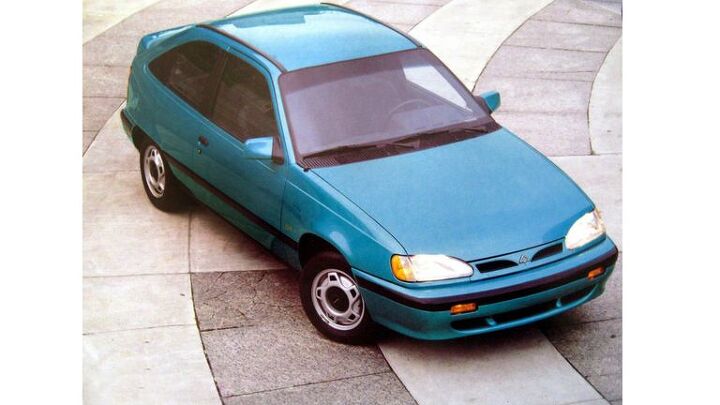




















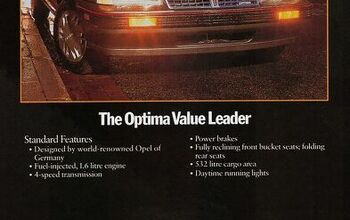
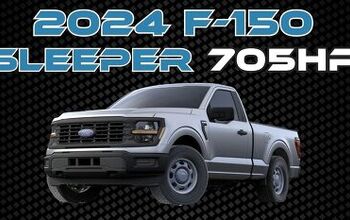
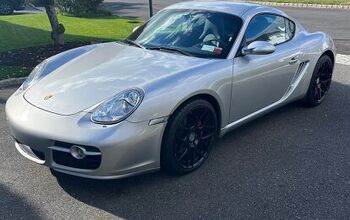
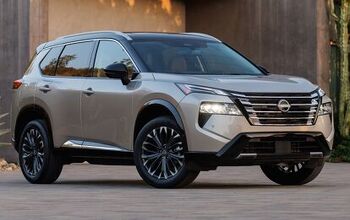

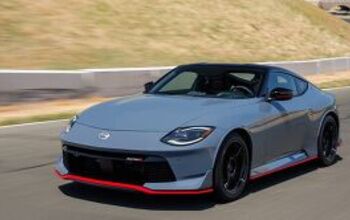
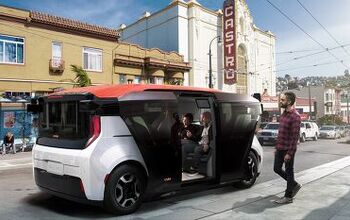
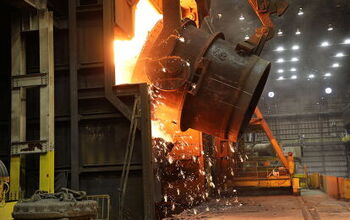
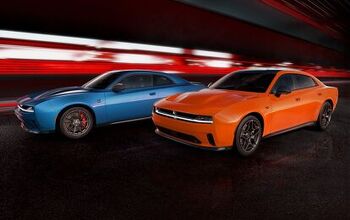
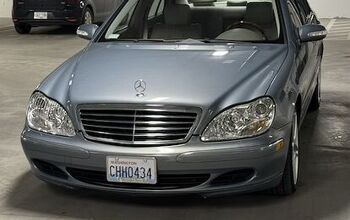
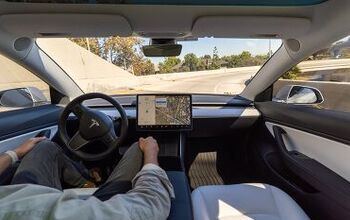
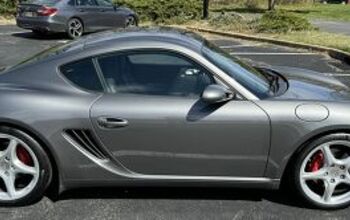
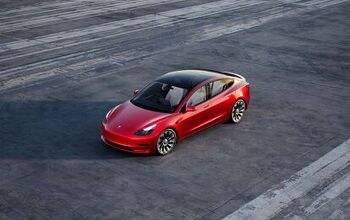

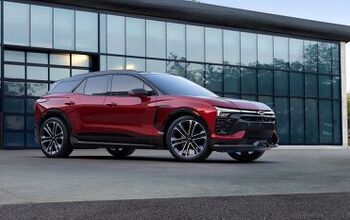
Comments
Join the conversation
The whole reason Pontiac dealers in Canada could complain about the cars Chevrolet could sell and they couldn't, goes back to the 1950s, if not before. It had to do with dealer franchising law somehow. Whatever the Chev-Olds dealer had, why the Buick/Pontiac boys had to have it as well. And note, Chevys were called Chevs in Canada, courtesy of thse big neon signs that said CHEV/OLDS/CHEV TRUCKS. Not to be confused with BUICK/PONTIAC/GMC. Ahem. Ford and Chrysler were similarly affected by the franchising horse manure. Take the Ford Falcon of 1960 as just one example. Mercury dealers got the same car called the Frontenac. Somehow, though, the Mercury Comet of 1961 never got a Ford equivalent. But Chrysler Valiants and Dodge Darts were all Valiants here, and we never got the goggle-eyed look of the compact US Dart from 1962 on, following the spacehip '61 ugger Dart full size early LSD fantasy. Take any Dodge dealer in the '50s who flogged Dodge pickups. The Plymouth dealer had the Fart and Go, Fargo. Rode in a '71 Slant six fart'n go in 1985. She was, 'ow you say? Used up and trundled around at Spring wheat planting time, the body flanks visibly wobbling with a ton and a half of fertilizer aboard, and the rear springs shaped in an inverted U. GM imported Vauxhall cars from England starting in the '50s. So Chevy dealers got the exact same car called the Envoy. Later, the Vega became the Astre at the Pontiac dealer. Same useless crap. Acadian was a Chevy II, the Beaumont a Malibu. Books have been written on this nonsense. It's even more complicated than these few snippets. Mercurys were too expensive compared to regular Fords, so Ford Canada made Meteors for Mercury dealers that were actually Fords. And the occasional devil-may-care rural doctor bought a real Mercury to demonstrate his financial prowess. No damn cheapo Meteor for him! Crazy. And why was the 318 Mopar engine a 313 in Canada? The bore was 3.87 inches instead of 3.91. Uh, yuh. Nutso. That 313 was what ended up in British Bristol cars. Made in Canada, you say? How gauche. The franchise laws also explains why Canadian Pontiacs were smaller than US Pontiacs and had Chevrolet running gear during the 1950s, '60s and '70s after the Pontiac sidevalve six was dropped in '53 for the 235 Chevy Stovebolt six, when that engine itself finally got full oil pressure lubrication. Before that she was a dipper wth a bucket on the conrods to sling oil around. Not long after that, to justify the extra fifty to a hundred bucks a Pontiac cost over a Chev in Canada, the stretched 235 emerged as the 261 school bus/5-ton truck engine and got plopped into Canadian Pontiac engine bays. Been in enough of them as a kid, three on the tree and smooth in a car, a raucous bellower in a schoolbus. No 389 Pontiacs in Canada until the GTO was finally imported in the late '60s for a couple of years. Don't think we missed much -- the Chevy 283/327348/409/350/396/427 had Pontiac's measure anyway. But Chevy's knock-kneed narrow-track suspension look on a fake and smaller "full-size" Pontiac kinda brought you up short. US tourist Pontiac Catalinas and Bonnevilles were giants with wide tracks compared to our Pontiacs. All changed with the new '77 B-bodies. Passport screwed up the balance between Chevrolet and Pontiac dealers here. No way it was going to last if dealers had any say. And now I cannot even remember which dealers finally sold Saturn - who gives a damn anyway, I say. How long did it take GM to screw up Saturn? About a decade.
The face-lifted 1993 LeMans was sold in the United States as both a sedan and hatch. I personally owned a green hatch just like the one in the picture and lived in Iowa. It as a basic car, but was solid and got around well. Had a 4-speed manual, no AC and the cursed electric seatbelts so popular at that time.